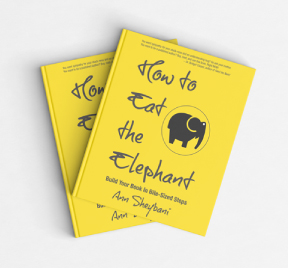Writing
Sweet, easy, and obstacle free
March 23, 2024
I love the excitement surrounding the release of a book. After months, if not years, all the associated work miraculously comes to life. Well, not miraculously, given the blood, sweat, and tears, but we can forget all that now. All is forgiven.
This is a segment from Bryn Lottig’s No Child Left Inside:Transforming the Next Generation Through Experiential Learning. I had the hardest time picking this one because the entire book is loaded with thought-provoking gems.
I once visited a famous winery with rows of grape vines growing in the rockiest soil you can imagine. I was surprised that anything could spring from such a spot. The tour guide claimed they had to be careful not to give the vines too much water. They gave them just enough, so they didn’t die; if they gave them precisely what they needed, they would produce sour grapes. When they make the grapevine struggle for moisture, they drive the roots deep into the soil, which creates resilience and strength. The result of this struggle for survival was the sweetest, most delicious grapes. The wine was proof of the efforts.
Some of us have inadvertently made life so sweet, easy, and obstacle-free that our charges wind up ill-equipped to do life. Some of these unchallenged kids cannot advocate for themselves, build resilience, or do hard things. They’re surprised when they meet resistance because rarely, if ever, have they had to contend with it. They can’t understand why an unfamiliar task, job, or relationship feels so demanding. They’re inclined to cling to their comfort zone and sink into helplessness, resulting in the human version of sour grapes.
Case in point: In my family’s history, there’s a narrative that stretches back generations, one that has shaped our understanding of work and wealth. My great-grandfather was an innovator who created the first bulk dairy cooler, laying the foundation for a successful business. This legacy was continued by my grandfather, who, at the young age of twenty-two, took the reins following a tragic alcohol-related car accident that claimed my great-grandfather’s life. He expanded the business into a dairy equipment empire.
However, this success brought with it challenges for the subsequent generations. My mother’s generation, having grown up with abundant resources and without the immediate necessity to earn, perhaps didn’t fully grasp the value of preserving and growing these resources. This was not out of malice or negligence but perhaps a natural consequence of their circumstances.
As these attitudes and beliefs trickled down to my generation, we faced our own set of challenges. Many of us, including my cousins, found ourselves navigating life without a clear sense of direction or responsibility. The assumption that resources would always be readily available led to a lack of preparedness for dealing with life’s hurdles. This has resulted in feelings of frustration and confusion about our identities and roles in the world.
A telling example is how my brother was immediately given a new car after totaling his previous one. This response, though coming from a place of care and support, inadvertently deprived us of learning from our mistakes and understanding the consequences of our actions.
Which begs the question: How do we put our kids in rocky soil, when so many of us are blessed with an envious standard of living and resources to spare? The better question is: How do we stress kids just enough to produce good wine but not so much that we do harm? Because too much stress, like too little water, can kill vines.
Just as winemakers prepare the soil for their vines, educators can provide a container—a community—to build life skills sustainably in a way kids embrace. First, you focus on managing stress, which accompanies the growth process.
Skill building must be done incrementally, in a way that won’t trigger a pattern of stress that creates hopelessness, that inspires a kid to say, “Why bother?”
Remember that learning something new entails stress. Stress must be moderate, controlled, and predictable to avoid sending an individual into a defensive stress response. This is why new skills are best built in the stretch zone.
What do I mean? Let me dramatize.
I do a comfort zone activity with kids that involves creating a little circle in the middle of another circle, which radiates outward into a larger circle, just like the outer ring of a bullseye. To demonstrate the idea of a comfort zone, I place kids in concentric circles and have them hold out their hands. The area within their reach, where they’re not touching others, is the comfort zone; outside of it, where they bend way out to brush against others, is the stretch zone. Beyond that ring is the panic zone. The panic zone is not good. That’s the place grapevines go to die.
The problem with staying in your comfort zone—which is effortlessly within reach—is that you’re not developing new skills or learning new things. It’s comfortable, hence the name. But beyond state management, nothing worthwhile happens there. This is where complacency reigns.
This stretch zone is just beyond one’s reach, which might feel uncomfortable to extend into, but the more you reach into it, the more comfortable you eventually get. Brushing your teeth with the wrong hand is an excellent example of doing something new within your stretch zone. It doesn’t feel good when you start doing it. You’re only effective at it once you practice quite a bit. But then doing it that way is well within your reach.
However, move into your panic zone, and your brain gets tunnel vision. All it can handle is getting you back into your comfort zone. This shows up as dysregulation. When you’re completely dysregulated, you can’t simply return to your stretch zone; you must reenter your comfort zone to regulate. And this can take a very long time.
Panic, and the associated dysregulation, are bad when you’re trying to learn new skills for many reasons. It’s essential for kids to understand this. They need to be able to watch for it in themselves and others, and not judge anybody for it, because it’s a biological response that can’t be thwarted. Fear is natural and functional, and it keeps us alive. Fear is a healthy and natural response to a perceived threat. On the other hand, panic causes us to lose control of our faculties. When we panic, we can’t think, reason, process, or plan.
To celebrate the release, you can purchase a copy of Bryn’s book for a very short time (less than 48 hours) at a show-stopping $2.99. You can do that by going here.


